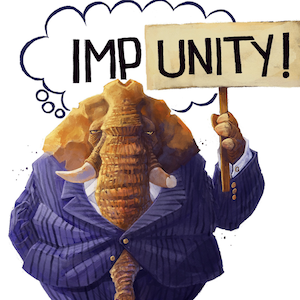Spy balloon drama elevates public attention, pressure for the US to confront China
Published in Political News
Suddenly, the United States’ action – or inaction – over what to do with the balloon became a hotly debated topic. President Joe Biden’s Republican opponents criticized his timing as late in shooting down the balloon. Former President Donald Trump claimed that no such balloon would fly over the U.S. under his administration – despite evidence indicating three such balloons flew undetected at the time.
While Americans have become increasingly suspicious of China’s role in the world, the country has been divided on how the U.S. should confront the risk.
More than three-quarters of U.S. adults have expressed an unfavorable opinion of China since 2020, according to a Pew Research Center survey in September 2022. This number has continued to rise since 2005.
And in 2021, 45% of Americans said that China is the greatest enemy of the U.S. – more than double the percentage who said so in 2020, according to a Gallup poll.
The balloon, whatever the intent of those who launched it, left the U.S. little choice but to down it – in order to both end the balloon’s intelligence gathering and mollify domestic critics.
While China has asked for the balloon back intact, countries often pore over and examine captured spy and military equipment thoroughly before returning it to the country of origin. Some countries may even refuse to return seized equipment. The U.S. has said it will not return the balloon.
So while espionage can reduce the chances of conflict by providing more information on a rival’s capabilities, getting caught can affect other parts of the bargaining process that make conflict more likely. Public outcry may force leaders to take a harder stand in future interactions with their spying rival. At present, the balloon incident has deflated political support for further cooperation with China and increases the likelihood of further confrontation.
The balloon incident may have surprised the U.S. population, but it fits the recent pattern of interactions between the U.S. and China.
The Trump administration engaged in a trade war with China, and though there were some steps toward better relations with a new trade agreement, the emergence of COVID-19 created new conflict between the countries. China was not fully transparent about what happened early during the pandemic. Trump claimed to have evidence that the virus originated in a Chinese lab (though most scientists believe it to have had natural origins).
A few days before leaving office, Trump administration officials accused China of committing genocide against the Uyghurs – a Muslim ethnic minority group of people who predominantly live in China’s northwest.
While the Biden administration has seemed less confrontational toward China than the previous administration, it maintained many of the Trump-era policies on trade – keeping tariffs against China in place – and the Uyghurs. Biden signed a law in 2021 that prevents the import of any Chinese products made with forced labor by the more than 1 million Uyghur people that China has illegally detained.
This article is republished from The Conversation, an independent nonprofit news site dedicated to sharing ideas from academic experts. Like this article? Subscribe to our weekly newsletter.
Read more:
Did China’s balloon violate international law?
The US and the Philippines’ military agreement sends a warning to China – 4 key things to know
Michael A. Allen has previously received funding from the Minerva Research Initiative, the Department of Defense, and the Army Research Office. Part of the work mentioned in here was funded by these organizations. The views expressed here are the authors' only and do not represent the views of any outside funder.
Carla Martinez Machain has previously received funding from the Minerva Research Initiative, the Department of Defense, and the Army Research Office. Part of the work mentioned in here was funded by these organizations. The views expressed here are the authors' only and do not represent the views of any outside funder.
Michael E Flynn has previously received funding from the Minerva Research Initiative, the Department of Defense, and the Army Research Office. Part of the work mentioned in here was funded by these organizations. The views expressed here are the authors' only and do not represent the views of any outside funder.







Comments